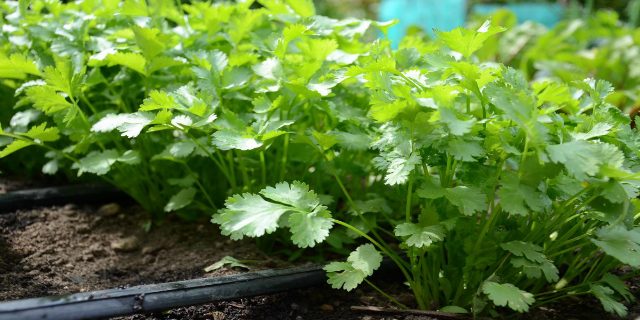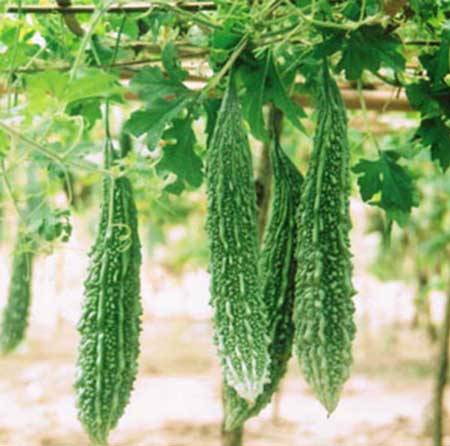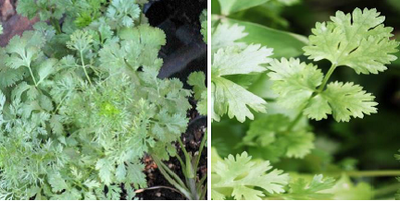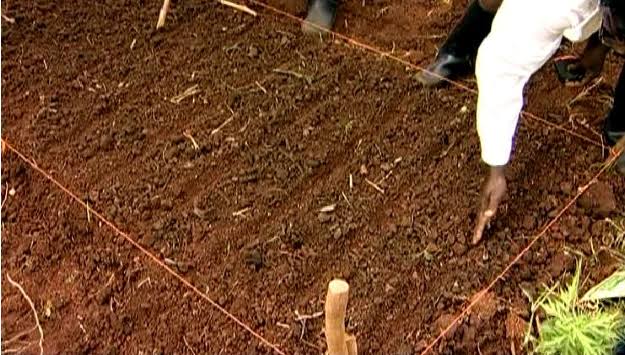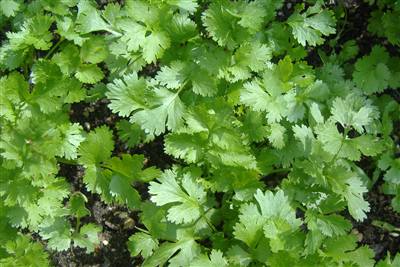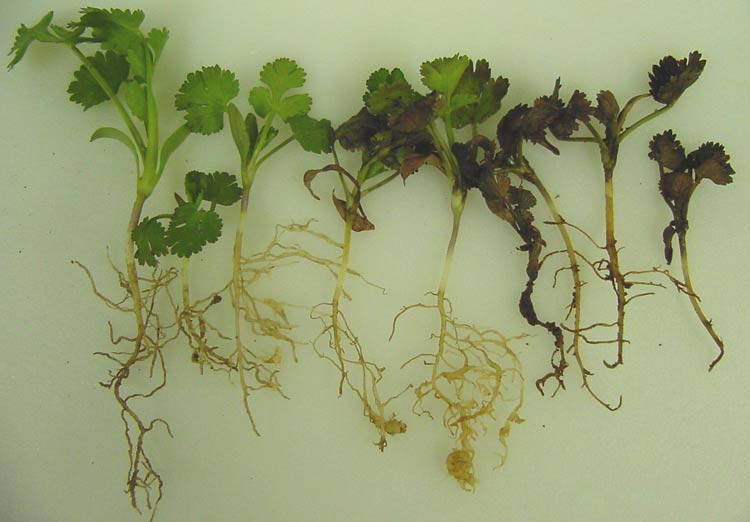- First irrigation should be done immediately after sowing.
- second irrigation should be done on the fourth day after first irrigation.
- Then subsequent irrigation should be done after every 7-10 days.
Farmers should sow these varieties of crops in march-April to increase the yield
| SN | Crop Name | Important variety (company’s name) |
| 1. | Bitter gourd | Nagesh (Hyveg), Amanshri, US1315 (Nunhems), Akash (VNR) |
| 2. | Ridge gourd | Aarti |
| 3. | Pumpkin | Kohinoor (pahuja), VNR 11 (VNR) |
| 4. | Okara | Radhika, Vinas Plus (Golden), Singham (Nunhems), Shatabdi (Rashi) |
| 5. | coriander | surbhi (Namdhari), LS 800 (pahuja ) |
Powdery mildew in coriander
- This is a terrible disease of coriander crop.
- In this disease, small white brown spots appear on the leaves, which later spread on the entire surface.
- Affected by this disease Plant leaves become dry and fall.
- For effective control of the disease spray hexaconazole 5% SC @ 400 ml / acre or tebuconazole 10% + sulfur 65% WG @ 500 g / acre or Pseudomonas fluorescens + Bacillus subtilis @ 0.25 + 0.25 kg / acre.
Soil and Climate for coriander
- Well-drained silt or loam soil are suited for cultivation.
- For rainfed cultivation, the soil should be clay in nature and the pH should be 6-8.
- Coriander performs well at a temperature range of 20-25oC.
- Cool and comparatively dry and frost-free climate is suitable for coriander.
Weed Management in Coriander
| Cranial period of crop-weed competition in coriander is 35-40 days. In this period we do not condemn weeds, then the yield of coriander is reduced by 40-45 percent. The excess or concentration of weeds in coriander and any of the following if necessary | ||||||||||||||||||||||||
|
Like and share with other farmers by clicking on button below.
ShareSuggestions for control of yellowing of Coriander Leaves
- Coriander is an important crop of spices, all parts like stem, leaf, and seed are used.
- If crop management is not proper, the problem of yellowing in the crop results in less production and the quality of the green leaves is affected.
- For its management, Apply Nitrogen Fixation Bacteria and Phosphorus Solubilizing Bacteria with Basal Dosage mixed up well in the field at the rate of 2 kg/acre.
- There are many reasons for yellowing of leaves like Nitrogen deficiency, Disease infestation, and Pest Infestation.
- Apply Thiophanate methyl 70% WP @ 250-300 gm/acre and chlorpyrifos 20% EC @ 500 ml/acre with irrigation.
- After this drenching apply 19:19:19 @ 500 gm/acre.
Like and share with other farmers by clicking on the button below
ShareSuggestions for control of yellowing of Coriander Leaves
- Coriander is an important crop of spices, all parts of which use stems, leaves, and seeds.
- If its management is not correct, then it becomes yellow, which reduces production.
- For its management, Apply Nitrogen Fixation Bacteria and Phosphorus Solubilizing Bacteria with Basal Dosage mixed up well in the field at the rate of 2 kg per acre.
- Due to the lack of nitrogen in the soil and the problem of disease and insects, coriander leaves turn yellowish.
- Apply Thiophanate methyl 70% wp @ 250-300 g and chlorpyrifos 20% EC @ 500 ml per acre with irrigation.
- After this drenching, apply 19:19:19 @ 500 gm per acre.
Like and share with other farmers by clicking on button below.
ShareRoot knot nematode of coriander
- Infected roots are formed by nodules and indeterminate shape.
- For its control-Select healthy and disease-free seeds.
- Clean the machines and tools being used in the field.
- Properly manage the weed in the coriander crop.
- Before sowing the coriander, plough the farm deeper and leave the farm open in summer.
- When the infection occurs on the plant, then apply biological control of Paecilomyces lilacinus @ 2-4 kg per acre from drip irrigation.
Like and share with other farmers by clicking on button below.
ShareSeed treatment of coriander
- Soak the seeds in water for 12 hours.
- Treat the seeds with Carboxin 37.5 +Thiram 37.5% @ 2.5 gm / kg seed.
Like and share with other farmers by clicking on button below
ShareSowing time in coriander
- For leaves purpose, coriander is sown in June-July.
- For seed production coriander is sown in October-November.
Like and share with other farmers by clicking on button below
Share
